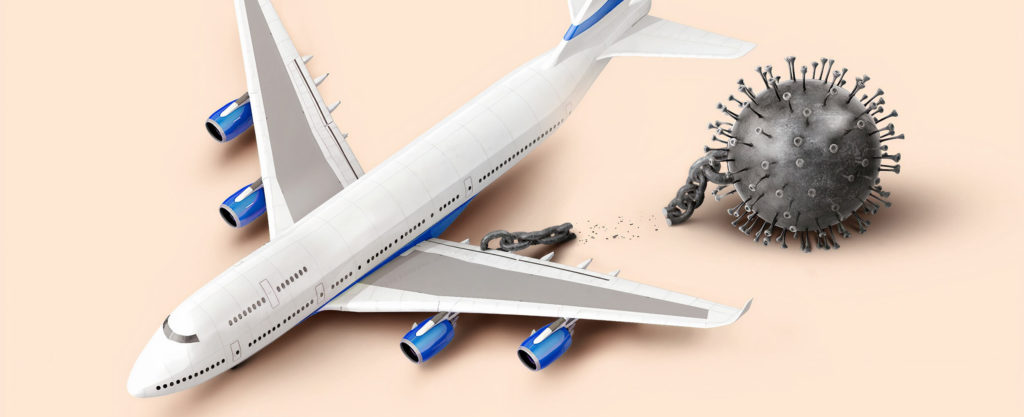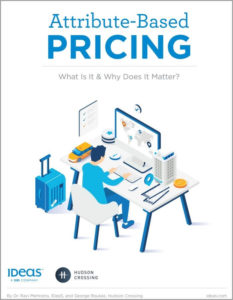At the end of July, the hotel industry celebrated an increase to 48 percent occupancy—add that to the list of things I didn’t think I would be saying this year.
In January, we were bemoaning how occupancy had “flattened” at 66 percent after a number of successful years. Seeing that occupancy has now risen to 48.1 percent may not be good news under normal circumstances, but it does show the desire for travel exists, even as cases of COVID-19 continue to increase across the country.
Savvy hoteliers have an overwhelming number of things to consider daily, from inventory management to revenue optimization—but they need to focus on all these aspects, including revenue, in the context of the new world of safety and the guest experience.
Operational and revenue-focused factors have begun to converge with consumer-facing concerns to create a new commercial playing field in which back-of-house number crunching and guest relations have drawn closer and closer together.
The New Guest Safety
Hospitality providers are in a position to create an environment to maintain a stable or even profitable occupancy as long as they reclaim travelers’ trust, but first they need to assure the public it is safe to stay at their properties. Trust is not easy to come by right now, particularly in the travel space. The E.U. has chosen not to welcome U.S. travelers until the country has control of the virus. Other experts indicate we could be at the beginning of more than 30 difficult months before we attain true recovery in the U.S.
With that in mind, hotels—which have traditionally served as an oasis of stability for travelers in unfamiliar locations—interestingly find themselves in a position of particular influence right now. If it’s anything hotel operators know, it’s how to create a welcoming hospitality experience. It is built into their professional genes as hoteliers. They know when travelers are in need, how to listen, and how to respond. If hoteliers are able to guarantee traveler safety, more bookings are sure to follow—and with them, a return of guest confidence in the traveler experience.
Many hotels are already doing a great job of providing a high-quality, safe experience for the travelers willing to leave home. The challenge is reaching guests directly with the message of safety and well-being. Success right now is just as much about creating and enacting effective policies as it is about spreading the word, sending the right message, and collecting updated feedback to continually improve their safety efforts and ensure clear communication to the guest.
Communication Evolution
The biggest challenge is demonstrating safety when so many guests are not on property to see if for themselves, and assisting those accustomed to older modes of communication and contact with the hotel. To start, operators will need to embrace new methods of communicating with guests. If not, they risk creating a sterile environment that fails to earn repeat bookings, regardless of their efforts to ensure safety.
Hoteliers love the front desk as a means of direct communication between guests and the hotel, but many guests right now are opting to use mobile check-in or other means to skip the process. Mobile access to guest rooms via either email or direct text is now gaining currency as the most effective way to provide a high-quality guest experience and still keep an open channel for communication.
To build a foundation for personal and effective guest communications, hoteliers also need a new level of data on traveler preferences. This is a great time for hotels to reach out to guests and begin a dialogue with them far in advance of their booking. By securing strong initial contact with guests, hotels are able to discuss what travelers might need to put them at ease during a stay. This will be crucial for success in the future.
It goes without saying that gathering the right kinds of data from guests, and providing property interaction the way they wish, is also critical to building loyalty—and hence, strong revenue streams.
Document & Deliver
Chances are you or a company you work with released a statement about the coronavirus. In it you may have said you were “listening” to consumers and “preparing” to do your part to combat the spread of the virus. Those kinds of assurances are necessary, and good. But consumers want to see the concrete efforts hotels have made to protect their guests from COVID. They have a desire to know about what is happening behind the scenes, at the front desk, in the hotel kitchen, and in their guest room between stays.
The industry is now built on the power of word-of-mouth and online reviews. Good news spreads fast this way, but so does bad news. Right now consumers are concerned their experience won’t match what they are being told online. Operators are tasked with creating a new series of expectations for guests—and delivering.
By now many hoteliers have updated their online presence with information that clearly shows their sanitization procedures, employee use of masks, or the amenities they are offering. Those that have not need to do so immediately. The next challenge they face is ensuring this information remains consistent across all booking platforms, especially the OTAs. Hotels should leverage all their technology partners to tap into historical data and identify their core travelers. Reaching these customers with your property’s updated messaging creates a clearer vision of what guests can expect when they arrive.
Lean on Technology
Many in the hotel industry have greatly increased investment in technology over the past decade, and now those hotels that made sound investments are primed to benefit most. Managing inventory should be easy right now with bookings as low as they are, but additional considerations such as COVID cleanliness policies and extended turnover times are adding an extra layer of complication. The busier your hotel is, the more difficult it is to manage using outdated tools.
Hotels should also be thinking long-term about the potential of short-term reduced occupancy and how to best adapt for the future. Visit any website and it’s easy to see how consumer needs have already shifted. Fashion brands are selling upscale masks and face coverings. More restaurants are offering select takeout menus. Everyone has different, specific needs today, whereas previously it was easier to satisfy guests with more straightforward or generic offerings. In order to latch onto and benefit from this shift, hotels need to re-examine the booking process. This is another way in which revenue, distribution and other financial areas are converging with e-commerce into a giant commercial mix.
Right now, guests relate their comfort while traveling to the level of control they have over their stay. The hotel booking process is at odds with this. While retail and even air travel allow consumers to pick and choose the amenities and services offered to them ahead of their purchase, hotels are not providing a booking experience that caters to their specific and ever-changing needs. The answer to this would be to provide an attribute-based shopping (ABS) experience, whereby guests could add or subtract different attributes to their booking ahead of time.
Using ABS, guests could specify they need a room on a lower floor to avoid elevators, guests could request breakfast to be served outside their door in plastic wrap versus a continental-buffet offering, or they could opt to pay extra to have their room deep cleaned during their stay. There are a multitude of reasons why guests would benefit from ABS, but the industry has a lot of work to do in order to get there.
IDeaS’ own Dr. Ravi Mehrotra, along with George Roukas of Hudson Crossing, explored the benefits and challenges involved in implementing ABS in their new paper: Attribute-Based Pricing – What Is It & Why Does It Matter?
Download the white paper to learn more about what attribute-based pricing is, why it matters, and how to pave the path for ABS in the unforeseen future.
There is no need to wait for new technology to make a move, however. Now is the time for hoteliers to gather new data on the guests they have and anticipate the trends that are months away. Start by finding out what guests value right now and offer meaningful packages that will catch their interest. Embrace new ways to communicate with guests to keep hold of the best available touchpoints. And tell your story to put travelers at ease.
The importance of a unified approach to revenue and commercial operations has never been greater. Stay one step ahead, and be prepared.

